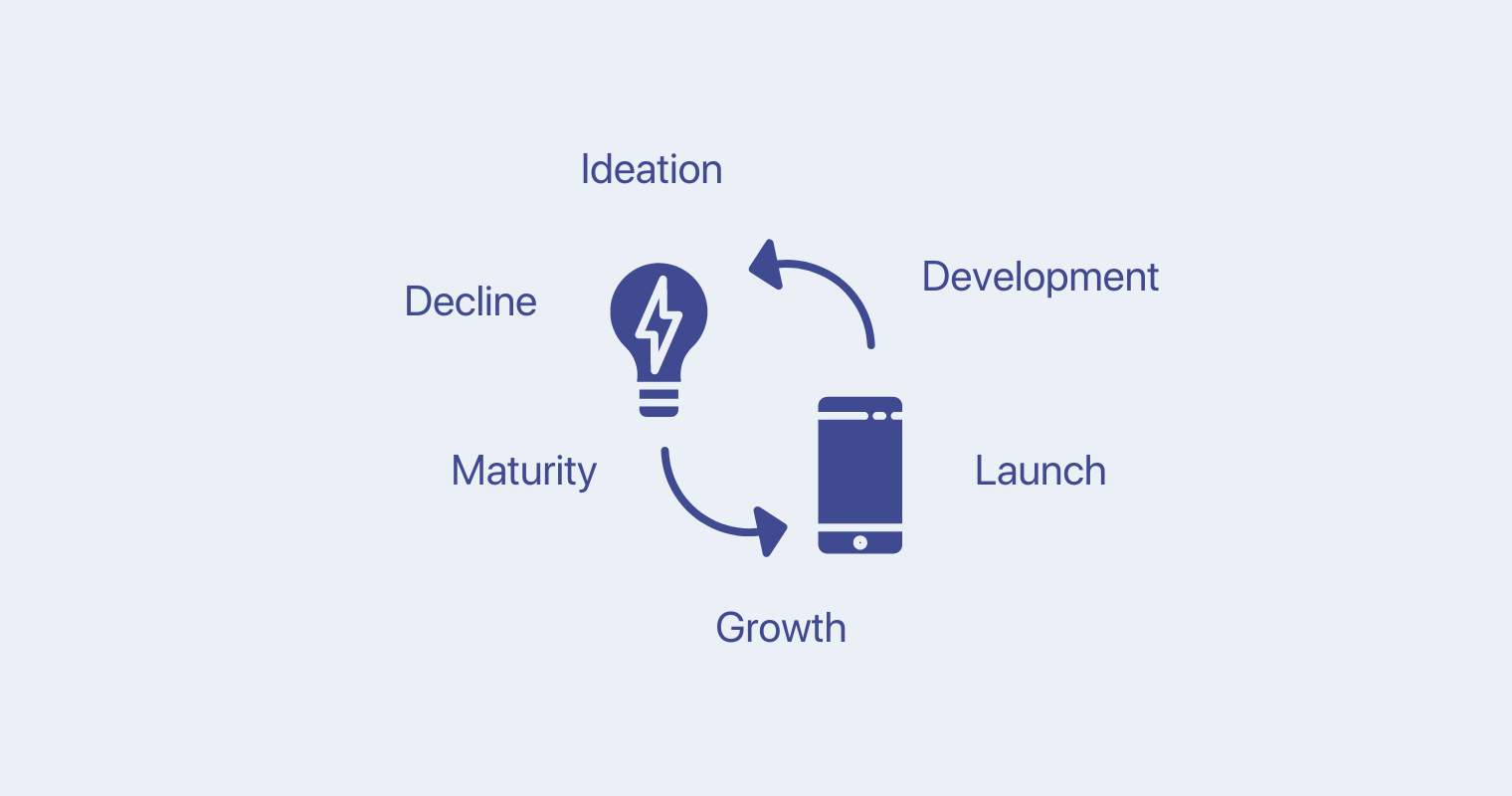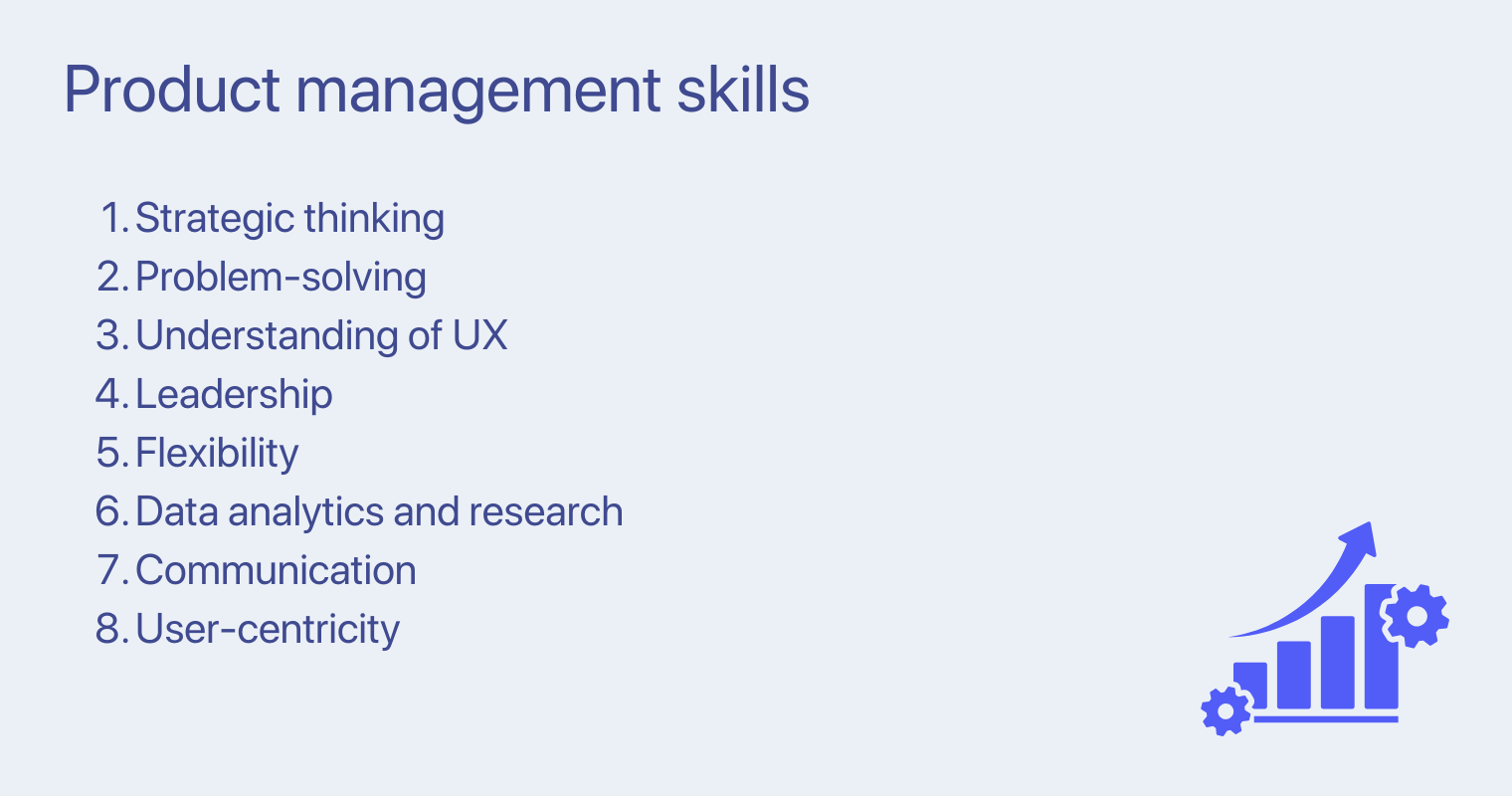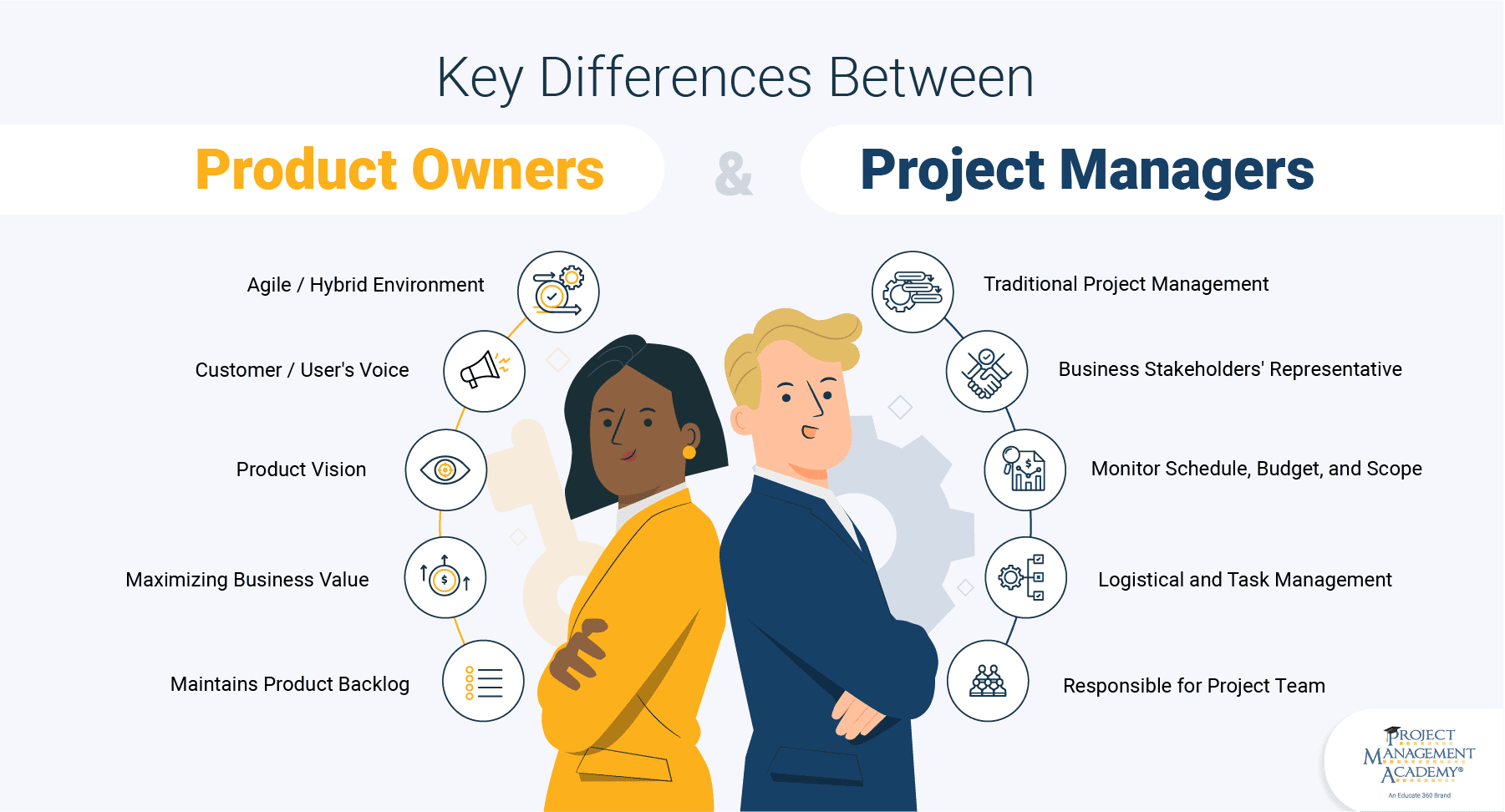Have you ever wondered how great products are born? It’s not just about having a brilliant idea. It’s about turning that idea into reality. This is called product management.
What is product management? Think of product managers as the bridge between the business side and the customer side of a product. They figure out what to build and why, then lead a team to make it happen.
Why is product management a fantastic field to be in? For starters, it’s incredibly diverse. You get to wear many hats – from market analyst to customer advocate. Every day is different. You’ll brainstorm new ideas, talk to users, and analyze data. You’ll also work with engineers, designers, marketers, and other teams. You can see your work’s impact as you bring products to life that solve a real customer problem.
Moreover, product management is at the heart of innovation. It’s about looking ahead, predicting trends, and creating products that shape the future. It’s exciting, challenging, and hugely rewarding.
This guide will dive deep into product management. We’ll explain why it’s a crucial part of any business and how you can excel in this dynamic field.
Evolution of product management
We can trace the origins of product management back to the 1930s at Procter & Gamble. Product management was initially part of brand management. The role oversaw the development, marketing, and distribution of consumer goods. This was more about maintaining the brand’s image and less about the product development processes and lifecycle management.
Product management experienced a few transformative shifts throughout the years.
- From brand to product focus. Product management shifted from being brand-centric to product-centric. This meant a deeper involvement in marketing, conceptualizing, and product development.
- Strategic and multidisciplinary approach. Modern product managers are both strategists and executors. They analyze market trends, identify customer needs, and craft a vision for the product.
- Technological adaptation. Product managers today need to grasp technology trends, software development processes, and digital marketing strategies.
The future of product management leans heavily on data analytics and enhancing user experience. Understanding how to leverage data for product improvement and user engagement will be crucial.
Product managers must be agile and adaptable. You need to be ready to pivot strategies in response to market shifts or new technological advancements.
Roles and responsibilities of product managers
Product management demands a unique blend of skills and a broad range of responsibilities. Let’s break down what this looks like in practice.
First, product managers are the voice of the customer within a company. They spend time understanding what users need and want. The product management process involves:
- Conducting market research
- Gathering feedback
- Shadowing users to see how they interact with products
- Processing, analyzing, and managing that feedback
- Creating and maintaining a product roadmap
- Creating a product backlog from feature requests
- Making product decisions based on that feedback
- Closing the loop with users to maintain relationships
- Sometimes, elements of product marketing
It’s all about empathy – really getting into the customer’s shoes.
Next, there’s the strategic aspect. A product team defines the vision and strategy for a product. They answer crucial questions like:
- What should we build?
- Why should we build it?
- How does this fit into our overall business goals?
This requires a deep understanding of the market, the competition, and the business.
Then comes the execution. The product management team works closely with engineering, design, marketing, and sales to bring a new product to life. This means deciding what features to include, setting timelines, and prioritizing tasks. It’s a balancing act – aligning business objectives, technical possibilities, and user needs.
But that’s not all. Product managers also play a crucial role in launching the product. They collaborate with marketing and sales to craft the right messaging. They also ensure the market understands the product’s value to deliver a successful product.
This sounds like a lot of responsibilities for just one person. That’s why some organizations distinguish between different kinds of product managers.
1. Growth product managers
Growth Product Managers (GPMs) expand the product’s user base and increase engagement and revenue. They need to identify growth opportunities within the product and market.
GPMs often leverage skills in digital marketing, user psychology, and advertising. They design and test growth strategies, usually using A/B testing. This improves user acquisition, retention, and monetization.
They work closely with marketing teams and rely heavily on data to guide their decisions. Their role involves a mix of marketing insights and product development.
PM spotlight: Lenny Rachitsky is a former product lead for growth at Airbnb. His role involved growing and monetizing Airbnb. Lenny’s newsletter and podcast are very popular for their useful and down-to-earth tips.
2. Technical product managers
A technical product Manager (TPM) is deeply involved in the technical aspects of the product. They often come from an engineering background.
They work closely with the development team to create and improve the product’s core functionalities. They are less focused on the outward appearance and more on the technical robustness and innovation.
PM spotlight: Ken Norton is well-known for his role as a former Product Manager at Google. He is currently a Partner at Google Ventures. Ken has always been deeply involved in the technical aspects of product development.
3. Data product managers
These product managers specialize in data-driven products. They are pivotal in businesses that rely heavily on analytics and data science.
Data product managers collaborate with data scientists and analysts. They are responsible for developing data models, implementing analytics tools, and interpreting data to inform product strategies.
A background in mathematics, finance, or data science is common for these PMs. They excel in extracting insights from data. They use these insights to guide product development and decision-making processes.
PM spotlight: Gibson Biddle is a former Netflix product manager. He played a pivotal role in using data to drive significant growth in the company’s membership base. His approach to product management involved deep data analysis and insight-driven strategies. This enhanced user experience and business growth.
In all these roles, the common thread is a deep understanding of the product, the market, and the customer.
The product lifecycle
What do product managers actually manage? People often refer to it as the “product lifecycle.”
Imagine it as the entire journey of a product – from its first inception to its eventual fade-out from the market. A product lifecycle is a series of stages almost every product goes through.

Let’s explore each stage.
- Ideation
This is the “Eureka!” moment. You’ve got an idea for a product. It’s all about brainstorming, validating the idea, and sketching what it could be.
Example: think of the early days of Instagram. It started as Burbn, a check-in app with photo-sharing as a feature. The founders realized the photo-sharing bit was catching on, so they pivoted. That’s ideation – finding that spark.
Strategy: focus on market research, customer needs analysis, and brainstorming sessions. Validate your idea with potential users and stakeholders.
Management tips: use tools like surveys, interviews, and focus groups to gather feedback. Be open to pivoting based on what you learn.
- Development
Now, you’re putting the wheels in motion. This is where the coding, designing, and building happen.
Example: consider the development of the original iPhone. Apple took the idea of a phone and reimagined it completely. It wasn’t just about making calls but about creating an experience.
Strategy: prioritize feature development based on user needs and business goals. Implement agile methodologies to manage the development process efficiently.
Management tips: work closely with developers and designers to ensure the product aligns with the vision. Regularly test the product with users to gather feedback and iterate accordingly.
- Launch
This is D-day! Your product hits the market. It’s all about marketing strategies, getting customer feedback, and initial sales.
Example: remember when Dropbox started? They didn’t just throw the product out there. They used a demo video to stir up interest before launch. That generated a massive waitlist even before the product was ready.
Strategy: develop a go-to-market strategy that includes marketing, sales, and distribution plans. Prepare for customer support and feedback channels.
Management tips: focus on creating a buzz around your product launch through marketing campaigns. Monitor initial user feedback closely to address any immediate issues.
- Growth
Your product’s in the market, and now you want to scale. This is about marketing, refining the product, and customer retention strategies.
Example: look at Netflix’s evolution from a DVD rental service to streaming. They grew by constantly adapting to technology and user preferences.
Strategy: implement strategies for user acquisition, retention, and monetization. Optimize the product based on user data and market trends.
Management tips: use analytics to understand user behavior and refine your product. Experiment with different growth strategies like referral programs or partnerships.
- Maturity
The product’s established, and growth slows. Now, it’s about maintaining market position and optimizing.
Example: Microsoft Office has been around forever, right? They keep adding features, tweaking the interface, and moving to a subscription model to stay relevant.
Strategy: focus on sustaining your market position and optimizing profitability. Explore ways to expand your product line or enhance existing features.
Management tips: conduct competitor analysis to stay ahead in the market. Keep innovating and updating the product to retain customer interest.
- Decline
Every product has its sunset. Demand drops, and maybe technology moves on. The trick is deciding whether to rejuvenate, retire, or pivot.
Example: think of Kodak. They were huge in film photography but didn’t keep up with the digital revolution.
Strategy: decide whether to rejuvenate, retire, or pivot the product. Explore options like targeting new markets or rebranding.
Management tips: conduct a thorough analysis to understand the reasons behind the decline. Be prepared to make tough decisions about the product’s future.
As you can see, product management is vast and requires many different skills. Let’s talk about those.
Product management skills
These skills are essential for building and managing successful products.

Strategic thinking
Product managers need to see the bigger picture and align decisions with business goals. This involves identifying opportunities and threats and developing a solid product strategy.
Problem-solving
Across the product lifecycle, product managers must overcome various obstacles. Those range from resource limitations to internal process challenges.
Understanding of UX
Collaborating with UX designers and understanding user experience principles is essential. Design thinking is a trendy term in UX. It’s an extension of innovation that allows you to design solutions for end users with a single problem in mind.
Leadership
Product leadership is crucial in this field. Product managers often need to make strategic decisions and motivate their teams.
Flexibility
Being adaptable and able to manage changing priorities is a vital skill for product managers. Product needs and business landscapes can shift rapidly.
Data analytics and research
Conducting ongoing market research, detecting trends, and monitoring competitors are crucial to staying ahead.
A data-driven mindset is essential for making informed decisions. This includes analyzing customer feedback and using data to track key performance indicators.
Communication
Practical verbal and written communication skills are vital to conveying product vision and strategy. They also help produce technical product specs, changelog entries, and more.
User-centricity
Understanding and empathizing with user needs is crucial. This involves defining user cases, creating customer personas, and gathering constant customer feedback.
This area is so important that it deserves its own section.
Customer centricity in product management
Customer centricity in product management puts the customer at the heart of every decision. It’s understanding their needs, their struggles, and what they truly value. Here’s how product managers can achieve this.
Understand customer needs and market trends
Being customer-centric means staying in tune with evolving market trends and understanding how they affect customer preferences. It asks: “What’s changing in our customers’ world, and how does our product fit into that picture?”
This can involve analyzing market reports and keeping an eye on industry news, emerging technologies, or shifts in consumer behavior.
Follow our blog updates to always know about the latest product management developments.
Methods to achieve customer centricity
User interviews: these are intimate, one-on-one conversations with your users. They’re a goldmine for insights. You can uncover pain points, discover hidden needs, and get candid feedback about your product.
Market analysis: this is where you dive into the broader market. What are the trends? Who are your competitors? What are they doing right or wrong? Market analysis helps you position your product to meet unfulfilled market needs.
Customer feedback mechanisms: tools like surveys, feedback forms, or even comments on social media are powerful. They provide direct input from the people using your product. It’s real-time, actionable feedback that can guide your product development.
See how Canny can help streamline your feedback management.
Remember – customer centricity is not just a strategy; it’s a mindset. It means constantly asking: “How does this decision impact our customers?” and “Does this move us closer to solving our customers’ problems?”
Overlap with project management
Wait, is product management different from project management? Which one is which again?
If you’re asking yourself that, don’t worry! Lots of people confuse these two roles every day. And there’s actually lots of overlap.

Similarities
Here are a few things that both roles involve:
- Planning and keeping track of timelines. This requires organizational skills and ensuring that deadlines are met.
- Setting key milestones. These are essential checkpoints to assess progress and align team efforts.
- Keeping an eye on the development process. Both roles need to ensure everything is proceeding as planned and adjusting strategies as necessary.
- Communication skills. They need to keep the team updated and manage stakeholders’ expectations of stakeholders.
- Using Gantt charts, project management software, and Agile methodologies. They track progress, identify potential delays, and ensure alignment with the overall objectives.
Differences
Focus and scope
A project manager is typically more focused on executing specific tasks and projects. They work within set parameters like time, budget, and resources.
Product management has a broader scope. It includes:
- Defining the vision and strategy for a product
- Understanding customer needs
- Ensuring the product’s long-term success in the market
End goal
The end goal of project management is to complete a project on time and within budget. In contrast, product management aims to deliver a product that meets market needs and drives business success.
Longevity and evolution
Project management often deals with a defined, finite set of tasks with a clear endpoint.
Product management is ongoing. It focuses on the product’s lifecycle. This means adapting and evolving the product based on market feedback and changes.
There’s definitely an overlap between project and product management. But the core focus and objectives of product management and project management are distinct.
Challenges in product management
Product management is an exciting and dynamic field. But it has its own set of challenges. Let’s break down these challenges and explore strategies to overcome them.
Feature prioritization
When you have a lot of ideas and feature requests, deciding what features to develop can be daunting. It’s about balancing what users want, what the business needs, and what’s technically feasible.
Strategies for overcoming
- Use a prioritization framework. Tools like the MoSCoW method or the RICE scoring model help objectively evaluate and prioritize features. Learn more about the most popular frameworks here.
- Base your decisions on customer feedback and market research. This ensures that the features you prioritize are aligned with user needs.
- Ensure that stakeholders are on board with the prioritization. Clearly communicate the rationale behind it.
Team alignment
Ensuring everyone in your cross-functional team is on the same page can be tricky. Misalignment can lead to confusion, inefficiency, and a product that doesn’t meet its objectives.
Strategies for overcoming
- Regular, clear communication about the product vision, goals, and roadmap helps keep everyone aligned.
- Use product management, project management, and collaboration tools to maintain transparency and real-time updates on progress.
- Regular meetings, like stand-ups or retrospectives, can help teams stay aligned and promptly address misalignments.
You’ll face challenges in product management even if you follow all the best practices. So save these tips for overcoming them. Then you’ll be better prepared and will know exactly what to do.

Tips for career progression and skill development
There’s always more to learn. Product management is a field that keeps changing, so ensure you’re always updating your knowledge.
Always learn
Check out online courses, webinars, or industry conferences. Learn about Agile, Lean, or Scrum. While these are more for project managers, they will help you excel too.
Certifications like PMP (Project Management Professional) or PSPO (Professional Scrum Product Owner) can formalize your knowledge and make your resume more attractive.
Network
Build a professional network within and outside your organization. Attend industry meetups and join LinkedIn groups and relevant subreddits. Find some Slack and Discord communities (like Canny’s!)
Networking can provide insights into best practices, new job opportunities, and mentorship possibilities.
Seek out mentors who can provide guidance and share their experiences.
Ask for feedback
Regularly seek feedback from peers, mentors, and supervisors. Understanding your strengths and areas for improvement can guide your career development.
Set clear goals
Define clear, achievable career goals. This could be aiming for a senior product manager position, leading a larger product, or moving into a specific industry sector. Break down these goals into smaller, manageable steps and track your progress.
Develop related skills
Enhance skills that complement product management:
- Project management
- UX design
- Data analytics
- Customer research and success
Improve soft skills like leadership, negotiation, and problem-solving too.
Share knowledge
Write articles or blog posts, speak at industry events, or join panel discussions. Sharing your knowledge helps others and establishes you as a thought leader. Plus, reiterating what you know helps you remember it.
Check out our list of the top product management blogs for inspiration.
Start side projects
Work on side projects or volunteer for new initiatives within your organization. This exposes you to different aspects of product management and broadens your experience.
Stay user-focused
We can’t emphasize this enough. Regularly interact with users and customers to understand their needs and feedback. Users hate feeling ignored. Don’t let that happen!
Product management is changing daily. You need to make sure you’re ready for what’s next. Speaking of the future…
Future of product management
The future of product management looks incredibly dynamic. Several emerging trends are shaping the field and influencing the evolving role of product managers.
Data analytics and customer insights
In the future, product management will become even more data-driven. Analyzing and interpreting data will be crucial. It’ll help understand customer behavior and market trends. You’ll also need to measure product success; analytics can help here.
This means product managers will need to know how to gain insights to make informed decisions.
Increased focus on customer engagement
Understanding customer needs and preferences will be more critical than ever.
Product managers will interact with customers more frequently. Learning how to do that effectively is vital.

Emerging technologies and trends
Technologies like AI and ML will play a more significant role in product management. They offer new ways to analyze data, understand customer behavior, and personalize the user experience.
Learn more about the top 2024 product management trends.
Agility and flexibility
Adapting quickly to market changes and pivot strategies will become increasingly important. Product managers must balance long-term strategic planning and the agility to respond to immediate market demands.
Ethical and responsible product development
There are growing concerns about privacy, data security, and ethical implications of technology. Product managers will need to be more mindful of these aspects in product development.
Why product management is a promising field and an important job
Let’s sum up what we’ve learned in this article. What is product management again?
This role spans various stages of a product’s lifecycle. Each stage demands different strategies and focus. Challenges like feature prioritization and team alignment are common. But, with the right approach, you can turn them into opportunities for growth.
The future of product management is shaping up to be even more data-driven and customer-focused. Emerging trends like AI and ML stand out. This evolving landscape offers a promising career path.
Product management is not just about managing products. It’s about innovation, understanding customer needs, and making strategic decisions. It’s a dynamic, challenging, and rewarding field.
Stay up to date with the latest news from product management – subscribe to our blog 🙂








